ASAP is a pioneer in LEED. Our team has helped to develop the LEED Rating System and LEED Volume program since inception. Our team has certified more than 1,700 projects in over 20 countries around the world and all 50 U.S. States. ASAP is a global leader in LEED certifications and Volume implementation.
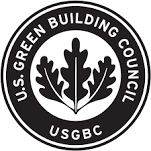
The U.S. Green Building Council (USGBC) is the foremost coalition of leaders working to transform the way buildings and communities are designed, built and operated and is committed to a sustainable, prosperous future through LEED, the leading program for green buildings and communities worldwide. ASAP’s team were early adopters and industry pioneers in LEED and thought partners with the USGBC. The ASAP team has been a thought leader and partner for the USGBC for over 15 years. Our team is comprised of LEED APs of all types, LEED Faculty and three LEED Fellows. We sit on Advisories for USGBC, the LEED AP exam, Greenbuild, Summits and more.

LEED helps buildings to focus on efficiency and leadership to deliver the triple bottom line returns of people, planet and profit. Today’s version of LEED, LEED v4.1, raises the bar on building standards to address energy efficiency, water conservation, site selection, material selection, day lighting and waste reduction. LEED is the world’s leading green building project and performance management system, delivering a comprehensive framework for green building design, construction, operations and performance.
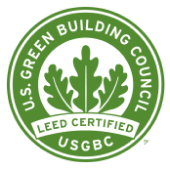
40-49 points earned
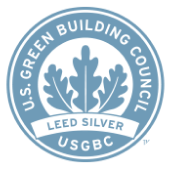
50-59 points earned
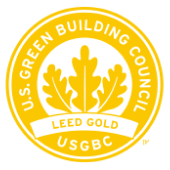
60-79 points earned
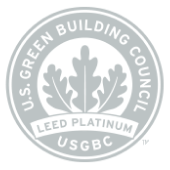
80+ points earned
The ASAP Team has extensive experience with the USGBC’s various LEED rating systems. ASAP is able to provide a full spectrum of integrated Sustainability and LEED consulting services including: LEED Project Management; LEED Volume Program/Portfolio Management; Design Team & Contractor LEED support services including preliminary assessment of LEED goals; facilitation of eco-charrettes; communication with all project stakeholders regarding the LEED process; maintenance of LEED scorecard; research of innovative green products, vendors, and technologies; and management of the entire LEED registration, documentation, submittal, and certification process. We also work with Arc to streamline LEED certification and recertification. ASAP provides LEED documentation for mechanical and electrical prerequisites. We also pre-review and provide quality assurance of LEED submissions before officially submitting to GBCI for review. This can be a good investment to minimize the number of review comments from GBCI and ideally get most prerequisites and credits awarded at the Preliminary Review phase.

LEED Volume certification is designed to streamline certification processes and costs across an organization’s building portfolio, while preserving LEED’s rigor. Participants in LEED Volume certification complete precertification of a prototype, which is a conceptual building or framework that can then be applied across a group of projects that have major elements in common, and can therefore pursue a common set of credits within a single LEED rating system. ASAP is one of the foremost industry leaders in the global application of LEED Volume with over 1,600 Volume certifications in 22 different countries and in all 50 US states. We are experts at assisting clients to establish sustainability standards, training and processes to successfully execute LEED Volume across their real estate portfolios.

U.S. Green Building Council (USGBC) membership is essential in developing and evolving LEED—the world’s most widely applied standard for sustainable building. ASAP is a Silver Level Member, passing through our Member discounts on USGBC products to our Clients.
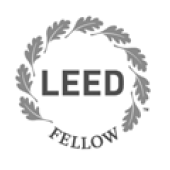
LEED Fellow is the most prestigious designation awarded by Green Business Certification, Inc. globally. LEED Fellows are LEED APs who have acquired significant technical knowledge and skills—and they have a history of exemplary leadership, impactful commitment, service, and advocacy in green building and sustainability. LEED Fellows are nominated by their peers, undergo an extensive portfolio review, must have at least 10 years of experience in the green building industry and hold a LEED AP with specialty credential, among other requirements. ASAP has 3 LEED Fellows on our team. Our Founder & CEO is active in the Fellow program and sits on the Fellow Selection Committee annually.

LEED Volume certification is designed to streamline certification processes and costs across an organization’s building portfolio, while preserving LEED’s rigor. Participants in LEED Volume certification complete precertification of a prototype, which is a conceptual building or framework that can then be applied across a group of projects that have major elements in common, and can therefore pursue a common set of credits within a single LEED rating system. ASAP is one of the foremost industry leaders in the global application of LEED Volume with over 1,600 Volume certifications in 22 different countries and in all 50 US states. We are experts at assisting clients to establish sustainability standards, training and processes to successfully execute LEED Volume across their real estate portfolios.

U.S. Green Building Council (USGBC) membership is essential in developing and evolving LEED—the world’s most widely applied standard for sustainable building. ASAP is a Silver Level Member, passing through our Member discounts on USGBC products to our Clients.

LEED Fellow is the most prestigious designation awarded by Green Business Certification, Inc. globally. LEED Fellows are LEED APs who have acquired significant technical knowledge and skills—and they have a history of exemplary leadership, impactful commitment, service, and advocacy in green building and sustainability. LEED Fellows are nominated by their peers, undergo an extensive portfolio review, must have at least 10 years of experience in the green building industry and hold a LEED AP with specialty credential, among other requirements. ASAP has 3 LEED Fellows on our team. Our Founder & CEO is active in the Fellow program and sits on the Fellow Selection Committee annually.

The Green Business Certification Inc. (GBCI) is an independent certifying and credentialing agency, that has managed the certification of more than 3 billion square feet of real estate and the credentialing of nearly 190,000 green building professionals (a number that is almost equivalent to the number of architects in the U.S.) GBCI has grown to administer 8-9 additional complementary rating systems to LEED that cover nearly every facet of the sustainability industry. ASAP’s team has been members of numerous GBCI, LEED and WELL Exam Committees chosen to review current exams and write new exams for updated versions of the Standards.

LEED Proven Provider is designed to reward experienced organizations that demonstrate successful and consistent performance in the LEED Project Administrator role in LEED Online by submitting documentation that is high quality and free of errors. With this designation, our Clients will benefit from an enhanced certification experience with streamlined reviews saving time and money. ASAP is currently working on achieving our Proven Provider status for both LEED BD+C and LEED ID+C.

The USGBC-Los Angeles Chapter is about people – passionate, practical, and informed professionals and advocates who work together to transform Southern California into a more sustainable region for all. ASAP Founder & CEO, Jennifer Berthelot-Jelovic has been a Member of the Chapter for over 10 years. Jennifer was a Board Member for 6.5 years as both Secretary and Vice Chair. She has been an active member of countless committees and volunteer events through the years and acts as an Advisor and Partner to the Chapter.

The Green Business Certification Inc. (GBCI) is an independent certifying and credentialing agency, that has managed the certification of more than 3 billion square feet of real estate and the credentialing of nearly 190,000 green building professionals (a number that is almost equivalent to the number of architects in the U.S.) GBCI has grown to administer 8-9 additional complementary rating systems to LEED that cover nearly every facet of the sustainability industry. ASAP’s team has been members of numerous GBCI, LEED and WELL Exam Committees chosen to review current exams and write new exams for updated versions of the Standards.

LEED Proven Provider is designed to reward experienced organizations that demonstrate successful and consistent performance in the LEED Project Administrator role in LEED Online by submitting documentation that is high quality and free of errors. With this designation, our Clients will benefit from an enhanced certification experience with streamlined reviews saving time and money. ASAP is currently working on achieving our Proven Provider status for both LEED BD+C and LEED ID+C.

The USGBC-Los Angeles Chapter is about people – passionate, practical, and informed professionals and advocates who work together to transform Southern California into a more sustainable region for all. ASAP Founder & CEO, Jennifer Berthelot-Jelovic has been a Member of the Chapter for over 10 years. Jennifer was a Board Member for 6.5 years as both Secretary and Vice Chair. She has been an active member of countless committees and volunteer events through the years and acts as an Advisor and Partner to the Chapter.
The LEED and WELL rating systems complement each other in many ways and have many similar goals. The fundamental difference between the two is that LEED focuses on buildings and WELL focuses on people. LEED measures how healthy the building is for the planet and WELL measures how healthy the space and/or organization is for the people. LEED is implemented by the U.S. Green Building Council (USGBC), a 501c3; whereas, WELL is implemented by the International WELL Building Institute (IWBI), a public benefit corporation. Both USGBC and IWBI use the same third-party verification entity, Green Building Certification Inc. (GBCI) for their certifications. LEED and WELL stand on their own as individual rating systems or they can be used together to holistically address the health of people and planet.
LEED is an internationally recognized green building certification system, providing third-party verification that a building or community was designed, built and/or operation and maintained using strategies aimed at improving performance across all the sustainability metrics that matter most in the built environment: energy savings, water efficiency, CO2 emissions reduction, improved indoor environmental quality, and stewardship of resources and sensitivity to their impacts. LEED was developed by the U.S. Green Building Council (USGBC) and provides a point based system to score green building design, construction, operations and maintenance in the credit Categories of Integrative Process, Location and Transportation, Sustainable Sites, Water Efficiency, Energy and Atmosphere, Materials and Resources, and Indoor Environmental Quality. LEED is available for all building types and all building phases including new construction, interior fit outs, operations and maintenance and core and shell. LEED is third-party verified and certified by the Green Business Certification Inc. (GBCI).
The first step in LEED certification is to choose the appropriate LEED rating system for your project based on the 40/60 rule guidance provided by USGBC. Next, all projects pursuing LEED certification must register on the LEED Online platform and submit the registration fee payment. Once registered, the building owner will put together a project team, including a project administrator and individuals responsible for achieving desired credits. The team should hold a kick-off charrette to review the project team’s goals and targeted LEED certification level while creating a Project Checklist. The project team will document all of the LEED prerequisites, which are required for certification. They will also document the agreed credits to achieve the certification level threshold the project is hoping to achieve. Once all of the documentation is completed in LEED Online, you pay your certification review fee. GBCI then has 25 days to review your project application. They will come back with preliminary review comments that the project team then responds to. GBCI has an additional 15-25 days to come back with the final review comments and certification. If the project team is satisfied with the final review, they can accept the project as awarded and the project is officially certified. However, this is where a project team may choose to appeal credits to earn points that were not awarded in order to attempt to secure the level of certification they are submitting for.
Learn more here: https://www.usgbc.org/tools/leed-certification/commercial#register
LEED, short for Leadership in Energy and Environmental Design, is the premiere rating system for sustainable buildings globally. LEED is administered by the U.S. Green Building Council (USGBC) and began in 1994. The sustainability methods employed in the design, construction, operation and maintenance of different LEED certified buildings varies based on building typology, goals of the project, and certification level. When a project is LEED certified this means it has met a set of preconditions in each of the credit Categories of Integrative Process, Location and Transportation, Sustainable Sites, Water Efficiency, Energy and Atmosphere, Materials and Resources, Indoor Environmental Quality and possibly Innovations. A certified project means it also earned enough points to reach one of the four levels of certification ranging from Certified to Platinum. The LEED plaque is recognized as an achievement in sustainability and leadership in the built environment that has been third-party verified.
LEED is the most widely used green building rating system in the world and can provide building owners with several benefits in addition to the environmental advantages. LEED-certified buildings generate significant operational savings and can provide lower utility bills for operators and tenants. There are financial benefits through tax rebates and incentives, and the healthier environment makes it more desirable for commercial and residential tenants. LEED buildings have reported almost 20 percent lower maintenance costs than typical commercial buildings. The Department of Energy reviewed 22 LEED-certified buildings managed by the General Services Administration and saw CO2 emissions were 34 percent lower, they consumed 25 percent less energy and 11 percent less water, and diverted more than 80 million tons of waste from landfills. LEED projects also scored an average ENERGY STAR score of 89 out of 100 possible points. LEED certification is a way to communicate inside and outside of the organization and project that the building is healthy for the planet and has been third-party verified to confirm these measures.
For more benefits: https://www.usgbc.org/press/benefits-of-green-building
Certified (40–49 points)
Silver (50–59 points)
Gold (60–79 points)
Platinum (80+ points)
The Green Business Certification, Inc. (GBCI) is the third-party organization that verifies and certifies both LEED and WELL projects.
More info on GBCI: https://www.gbci.org/#certification
There is no set time that it takes for a project to get LEED certified. The answer varies depending on the project and typology. Once a project has provided all documentation required for their rating system and submitted it on LEED Online, GBCI has 25 business days to review a design phase or initial application. The project team then has time to respond to these comments and submit review comments. GBCI once again has 15-25 business days to respond with final design application review comments or final review comments. If a separate design and construction applications are being submitted, the same 25 business day durations are applicable for the construction preliminary review application. Additionally, the experience of your LEED AP may help streamline and shorten the duration of time it takes to get certified.
LEED stands for Leadership in Energy and Environmental Design
At ASAP, we have robust expertise and experience in sustainability and health & wellness for individual projects and enterprise level solutions. Our team can provide support and services for all of your personalized needs. Use this form to reach out to us today, and we would be delighted to setup a conversation.
©2020 A SustainAble Production. All Rights Reserved.
©2020 A Sustainable Production. All Rights Reserved.